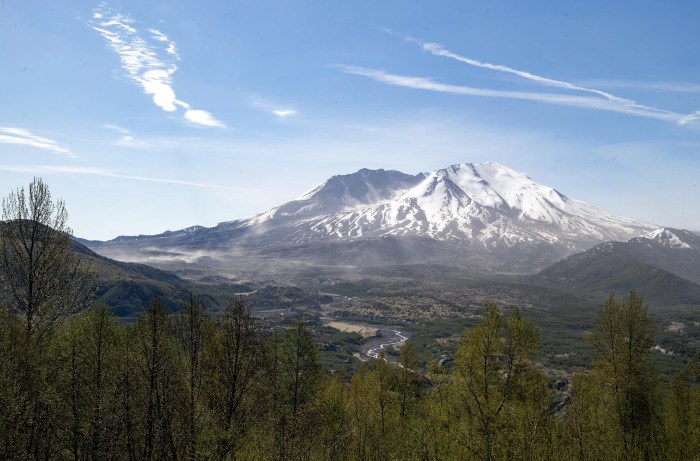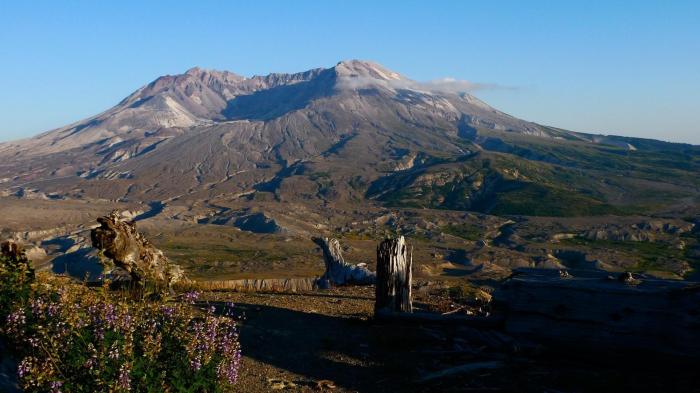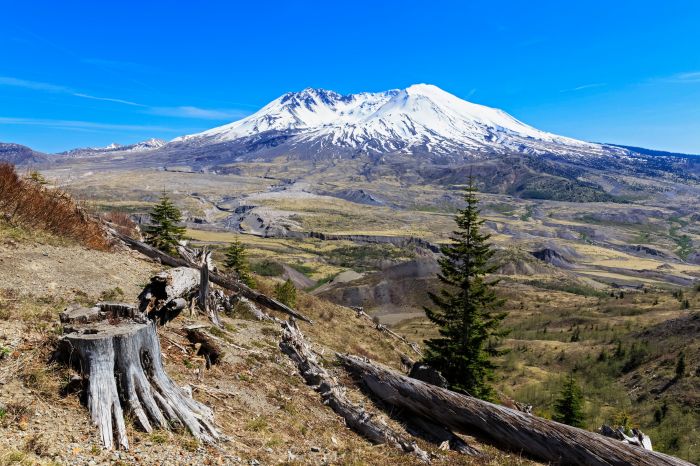Mount st helens a story of succession questions – Mount St. Helens: A Tale of Succession Questions explores the fascinating ecological journey of Mount St. Helens following its cataclysmic eruption. This article delves into the intricate processes of ecological succession, human impact, and the scientific significance of this iconic event.
The catastrophic eruption of Mount St. Helens in 1980 left a barren landscape, but over time, life has found a way to thrive once more. The ecological succession that has taken place since then offers valuable insights into the resilience of nature and the intricate interplay between species.
Mount St. Helens’ Volcanic Eruption

On May 18, 1980, Mount St. Helens in the Pacific Northwest erupted with catastrophic force. The eruption released an energy equivalent to 500 megatons of TNT, making it one of the most powerful volcanic explosions in recorded history.
The eruption was triggered by a series of earthquakes that weakened the volcano’s north face. A massive landslide occurred, exposing the volcano’s magma chamber and triggering a lateral blast that traveled at speeds of up to 670 miles per hour (1,080 kilometers per hour).
The lateral blast devastated an area of approximately 150 square miles (390 square kilometers), destroying forests, leveling mountains, and burying everything in its path with ash and debris.
Ecological Succession after the Eruption
The Mount St. Helens eruption created a unique opportunity to study ecological succession, the process by which plant and animal communities change over time following a disturbance.
The succession process began almost immediately after the eruption. Within weeks, pioneer species such as fireweed and lupine began to colonize the barren landscape.
Over time, more complex plant communities developed, including shrubs, trees, and eventually a mature forest.
The ecological succession at Mount St. Helens has been extensively studied, and it has provided valuable insights into the resilience and adaptability of ecosystems.
Human Impact and Recovery
The Mount St. Helens eruption had a significant impact on human populations and infrastructure. The eruption caused 57 deaths and destroyed hundreds of homes and businesses.
In the aftermath of the eruption, extensive efforts were made to recover and restore the affected areas. These efforts included reforestation, wildlife management, and the construction of new infrastructure.
Today, the Mount St. Helens area is a thriving ecosystem and a popular tourist destination. The eruption has left a lasting legacy, but it has also taught us valuable lessons about the power of nature and the importance of resilience.
Scientific Significance of Mount St. Helens, Mount st helens a story of succession questions
The Mount St. Helens eruption was a major scientific event that provided valuable insights into volcanic processes and ecological succession.
The eruption provided scientists with a unique opportunity to study the dynamics of a large-scale volcanic eruption.
The ecological succession that followed the eruption has provided insights into the resilience and adaptability of ecosystems.
The Mount St. Helens eruption has also had a significant impact on public awareness of volcanoes and the importance of disaster preparedness.
Query Resolution: Mount St Helens A Story Of Succession Questions
When did Mount St. Helens erupt?
May 18, 1980
What caused the eruption of Mount St. Helens?
A buildup of pressure from magma accumulating beneath the volcano
What was the impact of the eruption on human populations?
57 fatalities, destruction of infrastructure and property
What is ecological succession?
The gradual process of ecosystem development and change over time
What are some of the key plant and animal species involved in the ecological succession of Mount St. Helens?
Douglas fir, fireweed, elk, mountain goats


